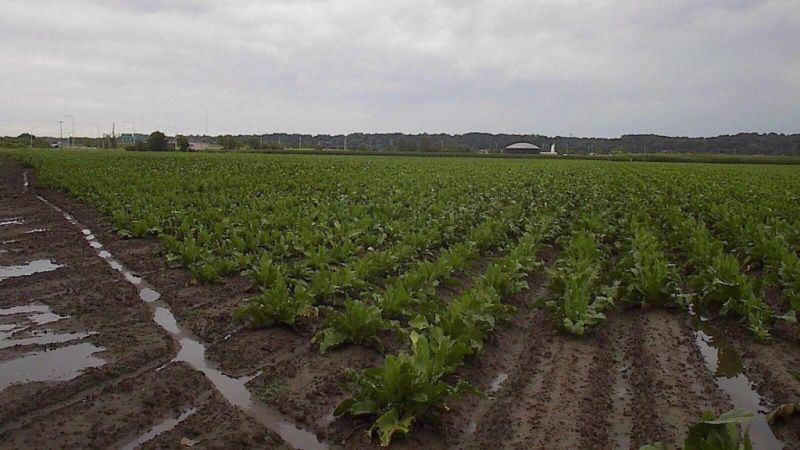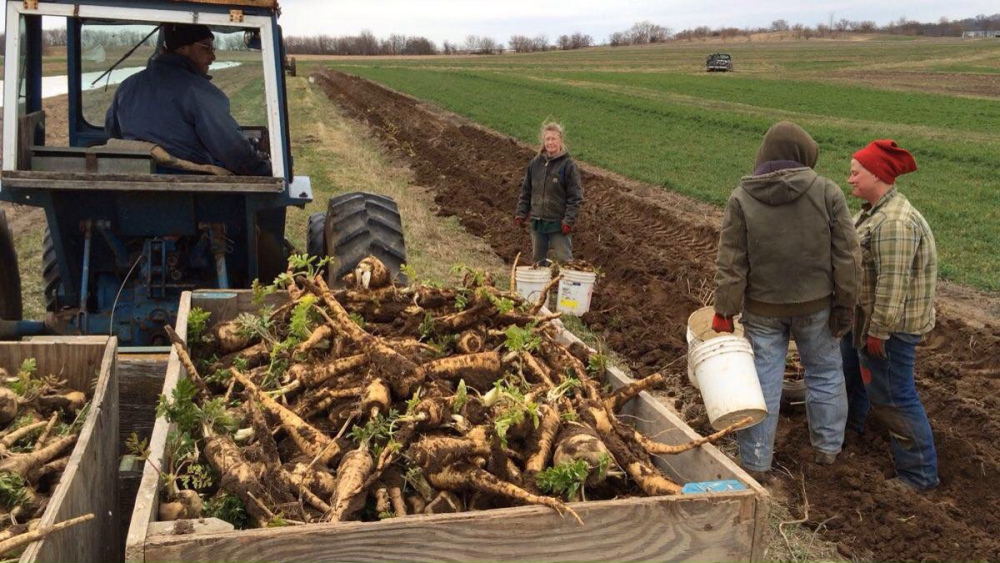Features of growing horseradish
Growing technology
Horseradish cultivation and farming techniques are not difficult. In order for the plant to develop well, it is planted near the fence, in an area with sufficient sunlight. The most favorable soils are loamy, chernozem and sandy loam. However, clay soils can also work if they are diluted with peat, sand or pus before planting.
Horseradish is planted mainly in the spring. The pre-prepared seedlings are removed from the shelter and placed first in a warm place for several days before the shoots germinate, and then they are planted in the ground at a distance of at least 30-40 cm between the plants.
In the hole, the root is immersed at an inclination of 45 degrees or completely horizontally, and not at a right angle, like other plants. The planted root is covered with earth and the soil is slightly compacted with your hands.
4-6 bushes are grown per 1 square meter. They grow and yield about 2 kg of roots.

Of this amount, 60% can be sold, since, in practice, they have a marketable appearance, and the rest are usually used for planting next year or sold as planting material.
Accordingly, if you allocate one hundred square meters of land for horseradish, it will be possible to collect and sell up to 200 kg annually.
Horseradish pests
The main pest that destroys the cultural thickets of horseradish is the horseradish leaf beetle, its second name is babanukha. It is a small black beetle with a greenish tint. It hibernates in soil or lumps of pus, at the beginning of summer it comes to the surface and begins to feed on horseradish and cabbage leaves.
Females of this insect make depressions in horseradish stalks and lay eggs in them. One individual is capable of laying up to 400 eggs at a time.

You can get rid of this beetle by destroying damaged leaves, digging up the soil in the fall, observing the correct crop rotation of plants on the site.
In the season of active horseradish growth, plantings can be treated with a 15% Aktellik solution.
Horseradish disease
Horseradish plantings can be affected by various diseases: powdery mildew, white rust and black rot.
To prevent their occurrence, soils are limed, but if we are talking about the fight against diseases, a phytosanitary regime and treatment with insecticidal preparations are needed. However, the latter method excludes the further use of green horseradish leaves for food in an unprocessed form.
Horseradish care
Growing and caring for horseradish can be divided into several important components.
For the formation of a rhizome with good marketability, you need to carefully monitor the density of the soil. You need to start this immediately after planting is completed. After 7 days, the soil must be loosened 2-3 cm deep, which improves its aeration and water permeability, then, after the emergence of sprouts, the loosening depth increases to 8 cm.
Watering should be regular, carried out as the top layer of the soil dries up (consumption - 4 liters per 1 sq. M). Removing weeds should also be regular so you provide enough space for the rhizome to grow in width and length.
Horseradish grows well in almost any conditions, but it is very responsive to feeding: to form a high-quality crop, it is recommended to apply phosphorus-mineral fertilizers in a frequency of once every 3-4 weeks after germination. In the fall, organic fertilizers (manure, for example) are carefully dug up on the site that they plan to take for horseradish.
With regard to varieties, experts advise growing the following:
- Atlant
- Boris Yeltsin,
- Valkovsky,
- Volkovsky,
- Wild,
- Jelgavsky,
- Latvian,
- Marune,
- Riga,
- Rostov,
- Suzdal,
- Tolpukhovsky.
The most common horseradish varieties in Ukraine are Atlant; Valkovsky and Tolpukhovsky.
Atlant
It is a mid-season variety. It has a white root with a gray tint, on which there are a few tubercles and small peripheral roots. The growing season from planting to leaf death is about 130 days. Blooms in the second year after planting. This species is resistant to frost, heat and drought. The weight of one root is up to 150 grams.
Valkovsky
It is a late-ripening variety. The length of the root reaches 60 cm. The cylindrical root has a yellow tint. The growing season from planting to leaf death lasts about 130 days. The mass of one root reaches 150 g.
Tolpukhovsky
It is a late-ripening variety. The root weight reaches up to 250 g. The vegetation period from planting to complete withering away of the leaves is 155 days.
Horseradish harvest
Horseradish is harvested in late autumn. It is advisable to renew the planting every 2 years, otherwise the rhizomes will become more rigid and reduce the quality indicators.
The bushes are dug in with a shovel or a special tractor, but it is not recommended to clear the roots from the soil in the garden, otherwise the site may become clogged with fragments of rhizomes. In the spring they will sprout and drown out other crops. The roots must be quickly removed for storage, otherwise they will lose their turgor. Horseradish roots are dipped into the basement, shifting layers of sand. Moistened soil is suitable instead of sand.

The leaves are stored for about 3 days in a dark, cool place. Packaging in polyethylene will allow you to extend the shelf life up to 20 days, but the basement will no longer work, you need a refrigerator. It is important that condensation does not form in the bag, otherwise the greens will deteriorate.
Prevention of overgrowth
In order not to have to get rid of horseradish in the future, after planting it is recommended to protect it with sheets of slate and tin. This will limit the growth of the root system.
Horseradish is a useful root vegetable that can grow in any conditions. But if you do not control the development of the rhizome, a vicious weed can turn out, which displaces other crops and conquers new territories every year.